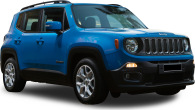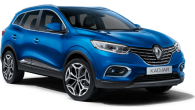The all-new 2021 Peugeot 2008 is designed to stand out in the crowded small SUV space, and it’s fair to say that this stylish French small SUV does exactly that.
It stands out not only because of its eye-catching design, but also due to its frankly wishful pricing strategy, which pushes the Peugeot 2008 from being seen as a rival to the VW T-Cross, MG ZST and Honda HR-V more towards the realm inhabited by the Mazda CX-30, Audi Q2 and VW T-Roc.
You might also be thinking about this as an alternative to the recently released Ford Puma or Nissan Juke. And you wouldn’t be out of place thinking it might rival the Hyundai Kona and Kia Seltos, too.
The thing is, the base model pricing is equivalent to what most of its rivals have in mid-range spec variants. And the top spec is over the odds, too, despite both offering pretty comprehensive equipment lists.
So is the 2021 Peugeot 2008 worth the money? And what’s it like on the whole? Let’s get to it.
Peugeot 2008 2021: GT Sport
| Engine Type | Turbo 3, 1.2L |
|---|---|
| Fuel Type | Premium Unleaded Petrol |
| Fuel Efficiency | 6.1L/100km (combined) |
| Seating | 5 |
| Price From | $36,410 - $43,340 |
Does it represent good value for the price? What features does it come with?
7 / 10
The Peugeot 2008 is one of the most expensive small SUVs in the mainstream part of the market, and it comes across quite overpriced at a quick glance at the price list.
The entry-level Allure model is a $34,990 proposition - that’s the MSRP/RRP, before on-road costs. The top-spec GT Sport version is $43,990 (list price/MSRP).
Let’s go through the standard specifications and equipment list for each model to see if they can justify the cost.
In the Allure, the standard gear comprises 17-inch alloy wheels with Bridgestone Dueler tyres (215/60), LED headlights with LED daytime running lights, cloth trim seats with “leather effects”, a leather-wrapped steering wheel, the brand’s new 3D i-cockpit digital dashboard, a 7.0-inch touchscreen media system with Apple CarPlay and Android Auto, DAB digital radio, a six-speaker stereo, four USB ports (3x USB 2.0, 1x USB C), climate control air-conditioning, push-button start (but not keyless entry), an auto-dimming rearview mirror, auto headlights, auto wipers, a “180-degree” reversing camera and rear parking sensors.
Allure models have hill descent control, where the top-grade models don’t, and they also have a different drive mode system with mud, sand, snow and normal driving settings that operate through the brand’s GripControl traction control management system.
The Allure has regular cruise control with speed sign recognition and a system that allows you to adjust to the signposted speed limit at the touch of a button, but it doesn't have fully adaptive cruise like the top-spec, which adds a number of safety items, too. More on the safety spec in the safety section below.
You can resolve some of those safety tech shortcomings by spending 23 per cent more on the more powerful GT Sport variant, but let’s consider the comfort and convenience inclusions first.
The GT Sport runs 18-inch black alloy wheels with Michelin Primacy 3 rubber (215/55), has the ‘lion claw’ signature LED daytime running lights and adaptive LED headlights with auto high beam lights, keyless entry, a two-tone black roof and black mirror caps, and gets distinct drive modes - Eco, Normal and Sport - and also has paddle shifters.
.jpg)
The interior of the GT Sport has Nappa leather-appointed seats, electric driver’s seat adjustment, heated front seats, driver’s massage seat, 3D sat nav, wireless phone charging, a 10.0-inch media screen, ambient lighting, wireless smartphone charging, black headlining, a perforated leather steering wheel, aluminium pedals, stainless steel sill scuff plates, and a few other differentiators. The GT Sport can be had with an optional electric sunroof, at $1990.
.jpg)
For a little context: Toyota Yaris Cross - starts at $26,990; Skoda Kamiq - starts at $26,990; VW T-Cross - starts at $27,990; Nissan Juke - starts at $27,990; Mazda CX-30 - starts at $28,990; Ford Puma - starts at $29,990; Toyota C-HR - starts at $30,915.
And then if you’re shopping for the GT Sport, there are rivals like: Audi Q2 35 TFSI - $41,950; Mini Countryman Cooper - $42,200; the VW T-Roc 140TSI Sport - $40,490; and even the Kia Seltos GT Line is a relative bargain at $41,400.
.jpg)
Yes the Peugeot 2008 is overpriced. But the weird thing is, Peugeot Australia has admitted that it knows the car is expensive, but reckons that the looks alone could make people spend extra on the 2008 over some of its rivals.
Curious about Peugeot 2008 colours? The Allure has the choice of Bianca White (no charge), Onyx Black, Artense Grey or Platinium Grey ($690), and Elixir Red or Vertigo Blue ($1050). Choose the GT Sport, and the free option is Orange Fusion as well as most of the other colours, but there’s also a Pearl White choice ($1050) instead of the white offered on the Allure. And remember, the GT Sport models get the black roof finish, too.
Is there anything interesting about its design?
9 / 10
The design is what could get you through the door and ready to lay down your money more than anything else about the Peugeot 2008. It is a very attractively styled model - far less van-like than its predecessor, and more modern, masculine and aggressive in its stance than before, too.
In fact, this new model is 141mm longer (now 4300mm) on a 67mm longer wheelbase (now 2605mm), but it’s also wider by 30mm (now 1770mm) and a bit lower to the ground too (1550mm tall).
It’s the way the designers have made this chunky new model look that has really hunkered it down, though. From the claw-like LED light slashes that run from the edges of the headlights down through the front bumper, to the upright grille (which varies depending on the variant) and angular metalwork pressing through the doors of the car.
If you want to know what Peugeot had in mind when it pencilled the new-gen 2008, you need to look back to the Quartz concept from 2014. Then you need to squint, make sure you don’t look too closely, and voila!
The rear is a sight to behold too, with a clean and broad look to it that is emphasised by the tail-light cluster and central garnish. Gotta love those claw mark tail-lights and the LED DRLs on the top-spec version, too.
You’ll decide if you like it or not, but there is no denying that its styling helps it stand out in the class. And because the new model is built on Peugeot’s CMP platform, it can be fitted with an electric motor or plug-in hybrid drivetrain as well as the petrol one used here. More on that below.
But what is also interesting is the fact the Peugeot team reckons the Allure model that opens the range is more targeted at the outdoorsy types (and has equipped it as such), while the GT Sport is for the more enthusiast-oriented buyer. We reckon they could have gone a bit harder on the themes, here, particularly for the Allure. And maybe not with Allure as its model name. Remember the original Peugeot 2008, which had a variant named Outdoor?
The eye-catching design flows into the cabin area - see the interior pictures below to get what I’m talking about - but there really is no other small SUV like this in terms of cabin design and presentation.
The brand’s polarising i-Cockpit - with its high-mount digital dashboard cluster and its tiny little steering wheel that you’re supposed to look over, not through - is either going to be fine by you, or completely unacceptable. I fall into the former, meaning I plonk the steering wheel down low in my lap, and set my seat so I’m looking over the tiller to the screen, and find it’s both interesting and likeable to live with.
There are plenty of other considerations for the practicality of the cabin, which we’ll cover off next.

How practical is the space inside?
8 / 10
It’s a small SUV, but it’s surprisingly spacious inside. There are plenty of models in this segment that manage this trick, and the Peugeot 2008 does it with a bit more flair than some.
The aforementioned i-Cockpit cabin design is attention grabbing, and so is the 3D cluster design on the driver’s display. It is mostly easy to get used to the controls, but despite Peugeot claiming the digital system can show the driver safety warnings faster than conventional dials and lights, there is some lag and delay when you adjust the screen display or trigger through the drive modes.
The steering wheel is a charming size and shape, the seats are comfortable and easy to adjust - but there are still some ergonomic annoyances.
.jpg)
For example, the cruise control system - which is a stalk hidden behind the steering wheel - can take a while to figure out. So can the steering wheel controls, and the driver info screen menu buttons (one is on the end of the wiper stalk, one on the steering wheel!). And the climate controls: there are switches and buttons for some parts, but the fan control - which is essential to access quickly on really hot or really cold days - is through the media screen, not a physical button or knob.
At least the media screen has a volume knob this time around, and the presentation of that bank of buttons below the screen looks to have been plucked straight from Lamborghini’s notebook.
The screen itself is okay - it is a little laggy to jump between screens or menus, and the 7.0-inch unit in the base model car is a bit small by modern standards. The 10.0-inch is a better fit for the technical focus of the cabin.
The material quality is mostly pretty good, with a neat soft-touch carbon-look trim on the dashboard, pleasing seat trim in both specs, and soft door elbow pads on all four doors (alarming becoming a less common thing in European SUVs).
.jpg)
It is French so the central cup holders are smaller than you might want, and the door pockets don’t have bottle-shaped receptacles, though they will fit a decent sized fizzy or water. The glovebox is tiny, and so is the centre armrest storage pod, but there’s a good size section in front of the shifter, and a drop down shelf which, in the top-grade model, incorporates wireless smartphone charging.
Rear seat convenience is somewhat wanting, with a pair of mesh map pockets but no centre cup holder or armrest, even in the high grade. The rear door pockets are modest, too, and the back door trims are a harder wearing material than that used up front.
The rear seat is a 70/30 split fold setup, with dual ISOFIX and top tether points. The occupant space is quite good for the size of the car - at 182cm or 6’0” I could easily fit behind my own driving position without wanting for more knee-room, headroom or toe room. Three adults across will be a squish, and those with big feet will need to watch themselves on the door-sills, which are quite high and can make ingress and egress clumsier than it should be.
The boot space is a claimed 434 litres (VDA) to the top of the seats with the two-stage boot floor in its highest position, according to Peugeot. That increases to 1015L with the rear seats folded down. There’s a space-saver spare wheel under the boot floor, too.
What are the key stats for the engine and transmission?
7 / 10
The engines offered in the two grades of 2008 are the same in capacity, but offer a split in terms of specs and horsepower.
The Allure runs the 1.2-litre three-cylinder turbo-petrol Puretech 130 engine, which has 96kW of power (or 130hp - at 5500rpm) and 230Nm of torque (at 1750rpm). It is offered as standard with a six-speed Aisin automatic transmission and front-wheel drive, and the claimed 0-100km/h for this model is 9.9 seconds.
Does the GT Sport’s 1.2-litre turbo three-cylinder petrol justify its nameplate? Well, the Puretech 155 tune makes 114kW (at 5500rpm) and 240Nm (at 1750rpm), has an eight-speed auto from Aisin, FWD and a 0-100km/h claim of 8.9sec.
Those are strong engine power and torque figures for the class, outgrunting most of their direct rivals. Both models have engine start-stop tech for fuel saving - more on fuel use in the next part.
How much fuel does it consume?
7 / 10
The claimed combined cycle fuel consumption for the Allure model is 6.5 litres per 100 kilometres, with emissions of 148g/km CO2.
The combined cycle claim for the GT Sport version is a little lower, at 6.1L/100km and CO2 emissions of 138g/km.
On the surface it may seem strange that both of those figures are considerably higher than the claim of the existing 1.2L auto model - which was less powerful but used a claimed 4.8L/100km. But that’s down to the change in testing procedures over the time between models.
For what it’s worth, we saw a dashboard-indicated 6.7L/100km on the Allure we drove mainly on highways and in easy urban driving, while the GT Sport was showing 8.8L/100km across that and a bit more spirited driving on wet, twisty roads.
Curious about the plug-in hybrid (PHEV) or electric (EV) versions of the 2008? They may well come to Australia, but we won’t know until probably 2021.
Fuel tank capacity is just 44 litres.
What's it like to drive?
7 / 10
I had rather high expectations for the new-generation Peugeot 2008, having been a huge fan of its predecessor. Does the new one live up to it? Well, yes and no.
Admittedly the conditions we drove it in weren’t what Peugeot would have been hoping for - a late October day with a high of 13 degrees and sideways rain for most of the drive program - but they actually showed up a few shortcomings that dry weather driving presumably wouldn’t reflect.
.jpg)
For instance, there was a serious struggle for traction at the front axle, to the point that ‘axle tramp’ - where the front tyres scrabble so hard to grip the surface that the front end feels as though it’s bouncing up and down on the spot - was a constant consideration when taking off from a standstill. If you’ve not experienced this, maybe you own an all-wheel or rear-wheel drive car, you could think there’s something wrong with the car. It is pretty disconcerting.
Once things are moving there’s better progress on offer, though it must be said that the GT Sport struggled for traction and was constantly squirming at the front axle, with the flashing traction control light a regular feature on the digital dashboard. This was the case in corners, too, where you want to feel assured progress and your tyres gripping the road surface to pull you back up to speed.
.jpg)
The GT Sport’s drive experience was otherwise pretty darn good. The suspension is a little tighter than the Allure, and that was noticeable over both lumpy road surfaces and the open road, where it transmitted more of the smaller lumps and bumps but also managed to feel less floaty and soft.
So it’ll depend which you prefer as to what model hits your targets. The Allure’s softer suspension is more urban friendly, though it’s 17-inch wheels and higher profile tyres - as well as the GripControl traction management system with mud, sand and snow modes - means it’s actually supposed to feel better in the open country.
.jpg)
Either of these two is going to offer some delight when it comes to the steering, which is both very quick to turn but also entertaining in its action because of the size of the wheel. The nose darts when it comes to direction changes, while parking is a cinch thanks to its tiny (10.4m) turning circle and quick lock-to-lock electro-hydraulic steering rack.
The engine in the Allure offers enough punch to suit the vast majority of buyers, so if you don’t want the glitter that comes in the top grade, you’ll likely find it completely fine for your needs. But if you do want to explore the engine’s potential, the GT Sport’s transmission - with two extra ratios and paddle-shifters for manual control - allows you that. Both, though, have the advantage of not being fidgety at take-off pace, as both are standard torque-converter auto gearboxes, not dual-clutch transmissions like so many of its jerkier competitors.
.jpg)
Neither is what I’d call “fast”, but both are quick enough to get moving despite some noticeable turbo lag in the Allure, which is less of a concern in the GT Sport thanks to its high-flow turbo and improved breathing. It gathers pace well, and because it’s so light (1287kg in GT Sport trim) it feels agile and sprightly.
The driver’s pick is the GT Sport, just. But in all honesty, both could be better at getting their power to the ground.
Warranty & Safety Rating
What safety equipment is fitted? What safety rating?
8 / 10
The Peugeot 2008 achieved a 2019 five-star Euro NCAP crash test rating for the equivalent spec models we’re receiving in Australia. It’s unclear if the score will be mirrored by ANCAP or not, though it likely won’t be re-tested under 2020 criteria.
The Allure model has auto emergency braking (AEB) which is operational from 10km/h to 180km/h, and it incorporates daytime pedestrian detection (from 0-60km/h) and cyclist detection (operational from 0-80km/h).
There's also active lane departure warning that can steer the car back into its lane if it breaches the road line markings (from 65km/h to 180km/h), speed sign recognition, cruise control with speed sign adaptation, driver attention alert (fatigue monitoring), hill descent control, and a 180-degree reversing camera system (semi surround view).
Step up to the GT Sport and you get day and night AEB with pedestrian and cyclist detection, as well as blind spot monitoring and a system called Lane Positioning Assist that can steer the car when the GT Sport model's standard adaptive cruise control system (with stop-and-go capability in traffic) is active. There’s also auto high-beam lighting and semi-autonomous parking.
Missing from all 2008 models is rear cross-traffic alert and rear AEB, not to mention a proper 360-degree surround view camera. The camera system used here is not great.
What does it cost to own? What warranty is offered?
7 / 10
Peugeot Australia offers a now industry-standard five-year/unlimited kilometre warranty plan, which is pretty decent backing for what is a rather small operation.
The company also backs its cars with a five-year roadside assistance plan to back the warranty, not to mention a five-year capped price service plan, which it calls Service Price Promise.
The maintenance intervals are set every 12 months/15,000km, and the costs for the first five years are not yet confirmed. They should be later in 2020, but Peugeot Australia says the pricing will be “comparable” to the existing version, which ran the following service pricing: 12 months/15,000km - $374; 24 months/30,000km - $469; 36 months/45,000km - $628; 48 months/60,000km - $473; 60 months/75,000km - $379. That averages out at $464.60 per service.
Concerned about Peugeot reliability? Quality? Ownership? Recalls? Be sure to check our Peugeot problems page for more information.
Verdict
If you are the sort of buyer who will pay over the odds for a car that looks great, then you might be a Peugeot 2008 customer. It’s a pretty impressive small SUV, but it’s pricing pushes it outside of the realms of reasonable consideration, especially given the raft of impressive rivals with which it competes.
Although Peugeot Australia expects more customers to go for the top-spec GT Sport, and we reckon it’s better equipped based on the standard safety spec, it’s hard to look past the Allure, though even it is too expensive for what you’re getting.
Pricing Guides



.jpg)
.jpg)
.jpg)
.jpg)
.jpg)
.jpg)
.jpg)
.jpg)
.jpg)
.jpg)
.jpg)
.jpg)
.jpg)
_0.jpg)
.jpg)
_0.jpg)
.jpg)
.jpg)
.jpg)
.jpg)
.jpg)
.jpg)
.jpg)
.jpg)
.jpg)
.jpg)
.jpg)
.jpg)
.jpg)
.jpg)
.jpg)
.jpg)
.jpg)









































 copy.png)
















.jpg)
.jpg)
.jpg)

.jpg)


.jpg)

Comments